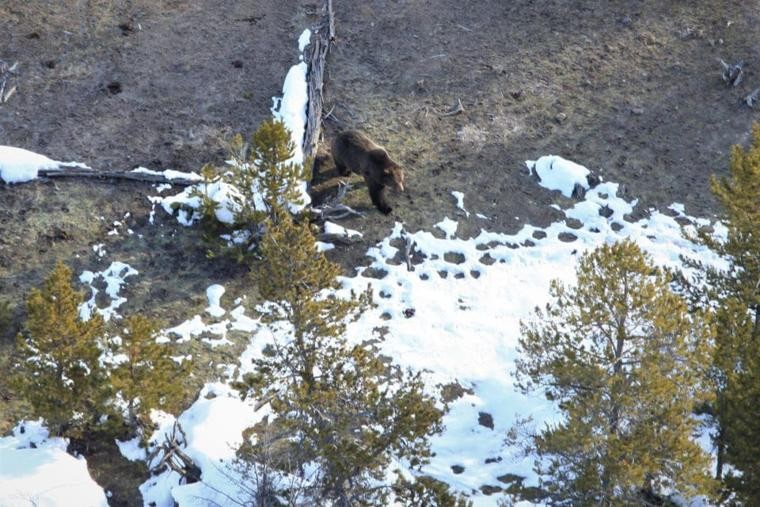Spring is beginning to stir and so are the bears.
Yellowstone National Park reported the first sighting of a grizzly bear this year on Saturday.
“The bear was observed from the air by biologists during a radio telemetry flight near Grand Prismatic Spring just one day before last year’s first sighting,” the park said in a news release.
The park said typically male grizzly bears emerge from hibernation in early March. Females with cubs emerge in April and early May. When the bears emerge, they often feed on winter-killed elk and bison.
“Sometimes, bears will react aggressively while feeding on carcasses,” the park said.
Starting Tuesday, the park issued restrictions in established bear management areas. Areas such as the Firehole area, Mary Mountain Trail and Gneiss Creek have entrance restrictions through Memorial Day and beyond to reduce human-bear interactions. Many of these areas have a high density of elk and bison carcasses, attracting bears. For specifics on bear management areas, go to tinyurl.com/pr-bear-closures.
With the exception of the road open year-round from Mammoth to Cook City, Montana, park roads are closed for spring plowing.
“As spring approaches and snow begins to melt, more people will come to see wildlife, hike some of the lower elevations trails, and ski and snowshoe in the higher elevations,” said park spokesperson Linda Veress. “Many visitors enjoy the relative quiet this time of year.”
Veress said this time of year between winter oversnow season and spring season sees few visitors.
“The only people in the park (aside from the areas accessible from the year-round road) are employees, contractors, and other administrative personnel,” she said.
The park also reminds visitors that Yellowstone is bear country and bears can be encountered anywhere.
“Now that bears are emerging from winter dens, visitors should be excited for the chance to view and photograph them, but they should also treat bears with respect and caution,” said Kerry Gunther, the park’s bear management biologist. “Many visitors think bears are ravenously hungry and more likely to attack people for food after emerging from hibernation, but almost all bear attacks result from surprise encounters when hikers startle bears at close distances and the bears react with defensive aggression. Hikers, skiers and snowshoers should travel in groups of three or more, carry bear spray, and make noise.”
The news release reminds visitors firearms are allowed in the park, but the discharge of a firearm by visitors is a violation of park regulations. Bear spray has proven effective in deterring bears defending cubs and food sources. It can also reduce the number of bears killed by people in self-defense.



